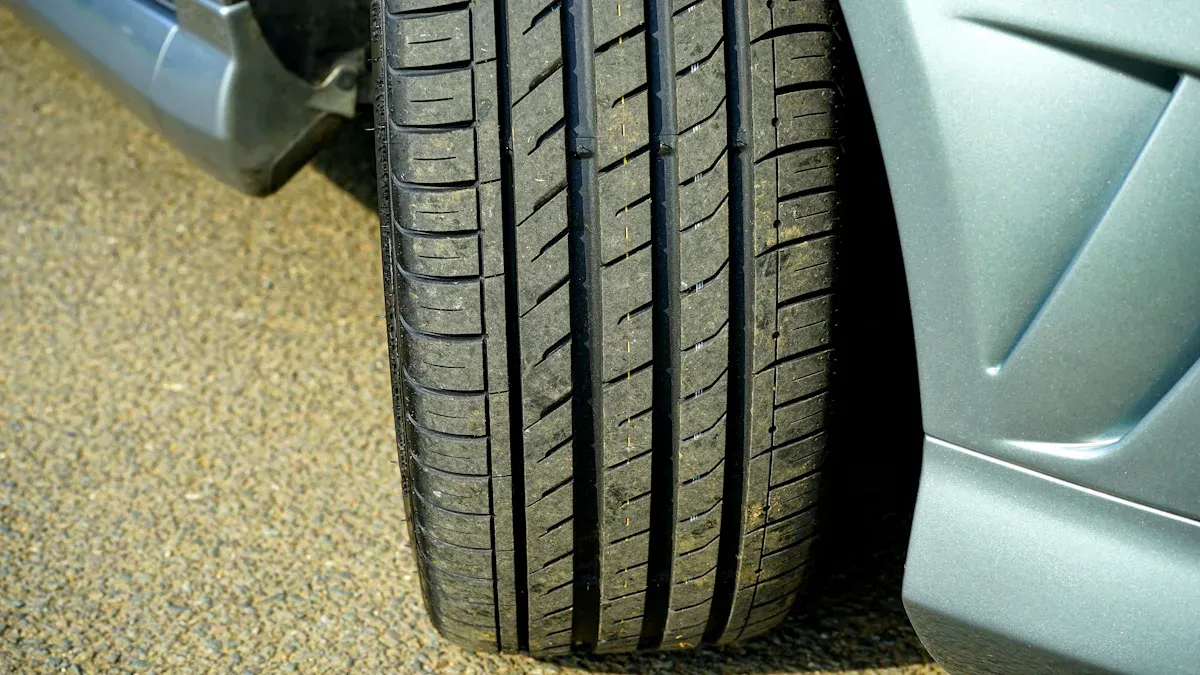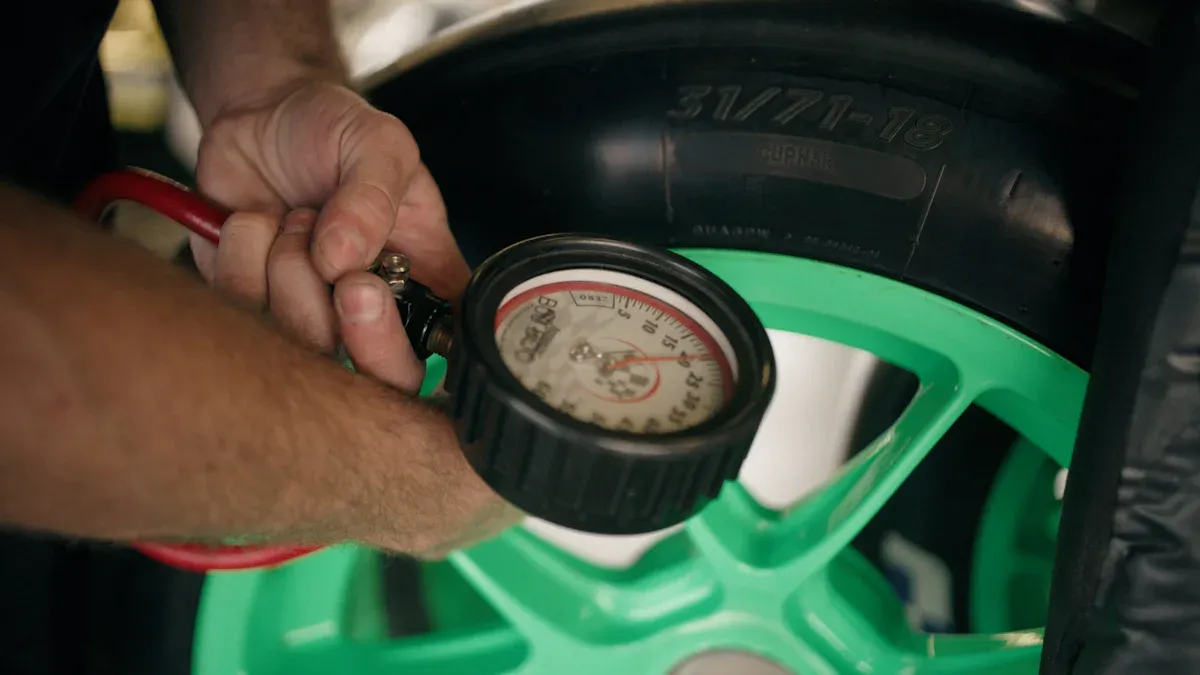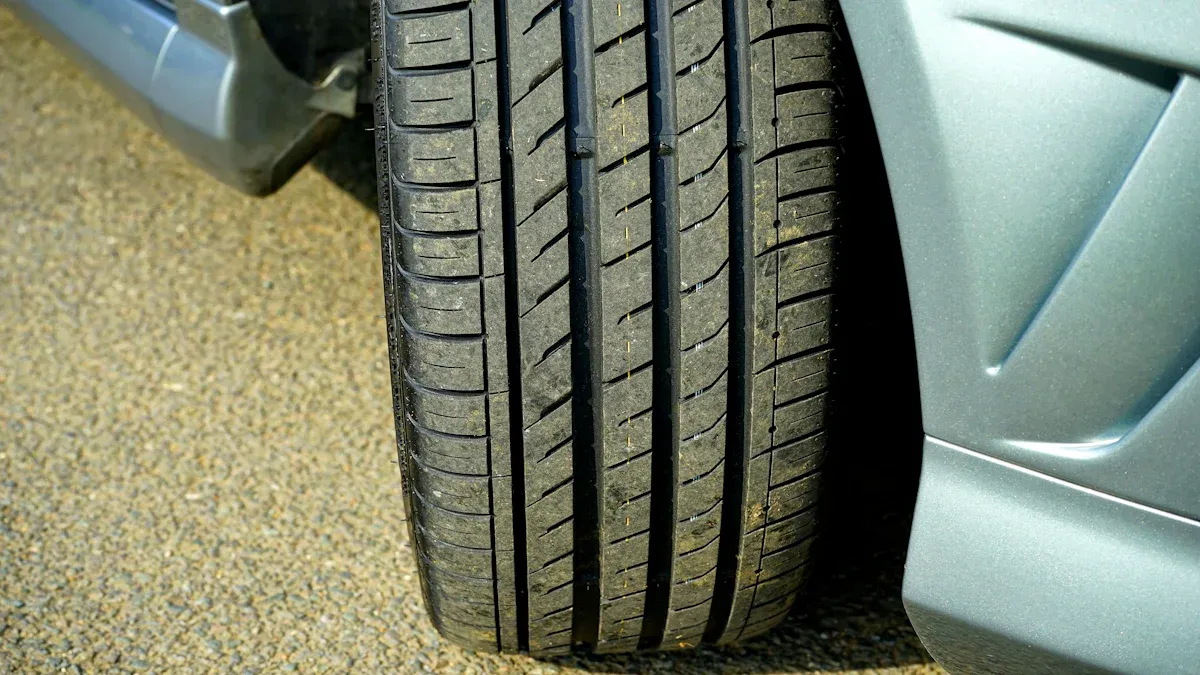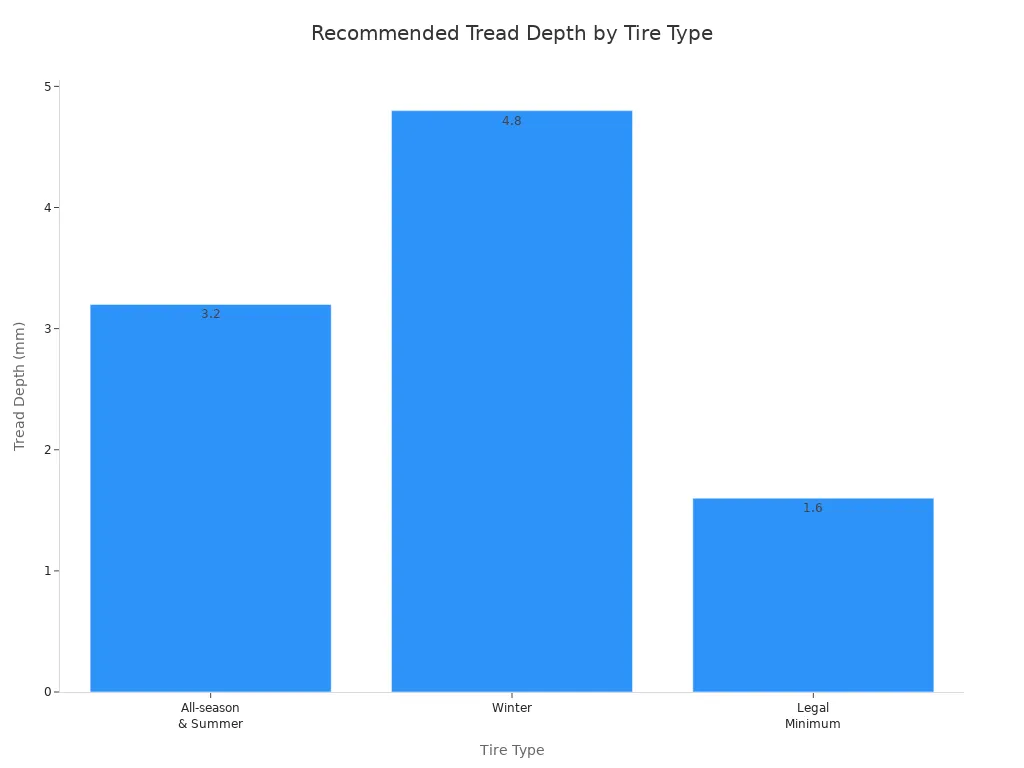
Tire tread depth plays a crucial role in keeping you safe on the road. Using a tire tread measurer to regularly check your tires can help prevent accidents caused by worn tires, which increase the risk of blowouts and reduce traction. In fact, studies show that tire blowouts are linked to 22.4% of vehicle defects in crashes. Regularly measuring your tire tread depth with a tire tread measurer not only enhances your safety but also boosts your vehicle’s performance and fuel efficiency.
Основни изводи
Regularly check your tire tread depth using simple methods like the penny or quarter test to stay safe on the road.
Използвайте tire tread measurer for the most accurate readings, especially if you notice uneven tire wear.
Replace your tires before the tread depth falls below 2/32 inches to avoid accidents and maintain good vehicle performance.
Measurement Methods

When it comes to measuring tire tread depth, you have several effective methods at your disposal. Each method has its own advantages, so let’s explore them in detail.
Тест с пенс
Това пенс тест is one of the simplest and most popular ways to check your tire tread depth. Here’s how to do it:
Grab a standard U.S. penny.
Insert the penny into a tire tread groove with Lincoln’s head facing down.
Check how much of Lincoln’s head is visible:
If you can see the top of Lincoln’s head, your дълбочината на протектора ви е по-малка от 2/32 инча, which means it’s time to replace your tires.
If part of Lincoln’s head is covered, your tread is still safe.
This method is quick and requires no special tools, making it a go-to for many drivers. However, keep in mind that while it gives a rough estimate, it’s not the most precise method available.
The Quarter Test
If you want a more cautious approach, consider the quarter test. This method helps you gauge a deeper tread depth:
Park your vehicle on a flat surface.
Take a U.S. quarter and insert it into the tire tread groove with Washington’s head facing down.
Observe the tread level relative to Washington’s head:
If the tread touches or covers Washington’s head, your tread depth is at least 4/32 инча, which is safer for driving, especially in wet conditions.
The quarter test provides a better safety margin compared to the penny test. It’s particularly useful if you frequently drive in rainy weather, as deeper tread helps with water evacuation and traction.
Tire Tread Measurer
For the most accurate readings, a tire tread measurer is your best bet. Here’s how to use it effectively:
Zero out the tread depth gauge by pressing it against a flat surface until the measuring pin is fully retracted.
Place the measuring pin in the center of the tire’s main tread groove and gently push down until the base of the gauge contacts the tread.
Carefully remove the gauge without touching the measuring pin to avoid altering the reading.
Repeat the measurement at least two more times at different points along the tread groove to account for uneven wear.
Using a tire tread measurer gives you precise measurements in millimeters or 32nds of an inch. This method is especially helpful if you notice uneven wear patterns, as it allows you to assess the condition of your tires accurately.
Wear Indicators
Many modern tires come equipped with built-in wear indicators, also known as tread wear bars. These small raised bars are located in the grooves between the tread blocks. Here’s what you need to know:
When the tread wears down to the level of these bars, it signals that the tread depth has reached 2/32 inches or less, indicating that it’s time for a replacement.
These indicators provide a visual cue, making it easy to monitor your tire condition without any tools.
Regularly checking these wear indicators can help you stay ahead of tire replacement needs and ensure your safety on the road.
Interpreting Tread Depth

Understanding your tire tread depth measurements is essential for maintaining safety on the road. Knowing what the numbers mean can help you make informed decisions about when to replace your tires. Let’s break down safe tread depth levels and when you should consider replacing your tires.
Safe Tread Depth Levels
Tread depth is measured in 32nds of an inch. Here’s a quick guide to what different tread depths mean for your tires:
Above 6/32 inches: Your tires are in good shape. They provide excellent traction and performance in both wet and dry conditions.
4/32 to 6/32 inches: This range is still acceptable, but you should start monitoring your tires closely. If you drive in wet conditions often, consider replacing them soon.
2/32 to 4/32 инча: At this point, your tires are nearing the legal minimum. You risk reduced traction, especially on wet roads. It’s time to start shopping for replacements.
Below 2/32 inches: This is the legal minimum tread depth in many places. Driving on tires this worn can be dangerous, as they significantly increase the risk of hydroplaning and longer stopping distances.
Here’s a table summarizing the minimum legal tread depths in various countries:
Country | Vehicle Type | Minimum Legal Tread Depth |
|---|---|---|
United Kingdom | Cars, light vans, light trailers | 1.6 mm across central 3/4 of tread and entire circumference |
United Kingdom | Motorcycles, large vehicles, passenger vehicles | 1.0 mm across central 3/4 of tread and entire circumference |
България | N/A (not specified in sources) | Н/А |
Germany | N/A (not specified in sources) | Н/А |
Replacement Guidelines
Knowing when to replace your tires is just as important as measuring tread depth. Here are some guidelines to help you decide:
Replace tires when tread depth reaches 2/32 of an inch or less. This is the minimum recommended by manufacturers and legal standards.
For all-season and summer tires, aim to replace them when tread depth falls to 4/32 инча. This ensures good wet braking performance and reduces the risk of hydroplaning.
Зимни гуми should be replaced when tread depth drops below 6/32 inches. This is crucial for maintaining traction in snowy and icy conditions.
Regular inspections are key. Check your tires frequently, especially if you notice uneven wear or if your vehicle feels unstable while driving.
Съвет: If you notice any signs of uneven wear, such as bald spots or excessive wear on one side, it might indicate alignment or suspension issues. Address these problems promptly to avoid further tire damage.
Recent studies show that tires with tread depths below 4/32 инча can significantly increase stopping distances on wet roads. In fact, stopping distances can double when tread depth falls to the legal minimum of 2/32 инча. This is why it’s vital to keep an eye on your tire tread and replace them before they reach that critical point.
By understanding these guidelines and regularly checking your tire tread depth, you can ensure a safer driving experience. Don’t wait until it’s too late—make tire checks a routine part of your vehicle maintenance!

Regularly measuring your tire tread depth is essential for your safety and vehicle performance. It helps prevent accidents and costly repairs. Consider these points:
Proper tire maintenance extends tire lifespan and saves money.
Monitoring tread depth reduces the risk of blowouts and skidding, especially in bad weather.
Over one-third of drivers check their tread depth twice a year, but you should aim for more frequent checks.
Make tire checks a routine part of your vehicle maintenance to ensure a safer driving experience!
Често задавани въпроси
Колко често трябва да проверявам дълбочината на протектора на гумите?
Трябва check your tire tread depth поне веднъж месечно или преди дълги пътувания, за да гарантирате безопасност.
What is the legal minimum tread depth?
Това legal minimum tread depth in many places is 2/32 inches. Driving on tires below this can be dangerous.
Can I drive on worn tires?
Driving on worn tires increases the risk of accidents. It’s best to replace them as soon as they reach 2/32 inches.
Вижте също
Step-By-Step Guide To Measuring Tire Tread Depth Precisely
Значението на редовните проверки на протектора за безопасност
Разбиране как функционират интелигентните сензори за дълбочина на грайфера на гума






